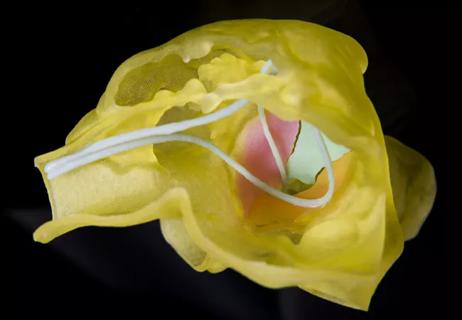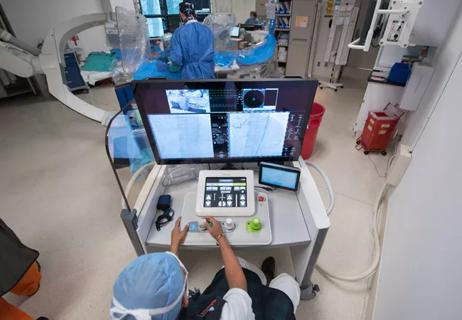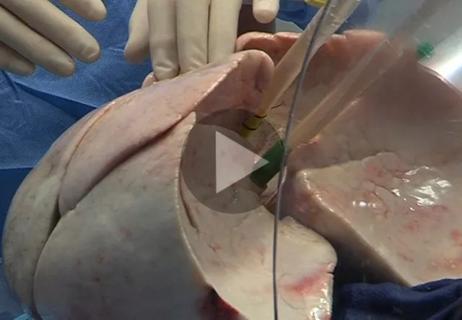How it adds value in structural assessment of bioprosthetic MV function
By Paul Cremer, MD
Advertisement
Cleveland Clinic is a non-profit academic medical center. Advertising on our site helps support our mission. We do not endorse non-Cleveland Clinic products or services. Policy

Echocardiography is the mainstay for assessing bioprosthetic mitral valve function, but when it comes to assessing structure, there’s an emerging role for four-dimensional (4-D) CT. That’s particularly the case when there’s a diagnostic question of whether the predominant pathology is calcification versus valve thrombosis.
The 4-D CT images above highlight this point. The top two images are from a patient with symptomatic bioprosthetic mitral valve stenosis. On the left, the reconstructed apical four-chamber view shows hyperattenuated bioprosthetic valve leaflets, representing severe calcification. On the right, the short-axis reconstruction also shows leaflet hyperattenuation, consistent with calcification.
In contrast, the bottom two images are from a case of subacute bioprosthetic valve thrombosis in a patient with symptomatic mitral stenosis. On the left, the apical four-chamber reconstruction shows layering hypoattenuation along the sewing ring, indicating thrombus. On the right, the short-axis reconstruction shows prominent hypoattenuation and increased leaflet thickness illustrating the extension of thrombus onto the leaflets.
Imaging calcium is a strength of CT and a relative weakness of echocardiography, despite the overall strength of echo to assess the severity of bioprosthetic mitral valve dysfunction. The above images highlight how helpful 4-D CT can be in evaluating structural causes of bioprosthetic mitral valve dysfunction, particularly for distinguishing between calcification and thrombus.
Advertisement
Dr. Cremer (cremerp@ccf.org) is a cardiologist in Cleveland Clinic’s Section of Cardiovascular Imaging in the Sydell and Arnold Miller Family Heart, Vascular and Thoracic Institute.
For more reading on how 4-D imaging informs complex aortic valve repair in adult and pediatric patients, read this story from Cleveland Clinic Children’s of how a congenital heart surgeon and heart anatomist-imager team up to improve surgical success.
Advertisement
Advertisement

Patient-patient network analysis proves to be fast and clinically intuitive

How we’re using a new multidisciplinary approach to broaden the benefits of ablation

Models developed with promising accuracy and generalizability to clinical practice

Illustrated case series profiles a valuable tool for a rare and complex entity

A minimally invasive, single-incision approach to two coexisting problems

A long-overdue technology is poised to reshape practice

A short video portrait and overview of our experience to date

A glimpse into our centralized monitoring strategy and more